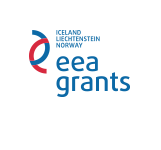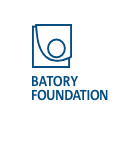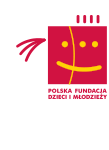How public administration uses information
Public scrutiny
Completed
mazowieckie
Wierzbica
2014-03-03 - 2015-09-03
91 271,79 PLN
81 999,79 PLN
public finances
Project description
The main identified problem was the lack of social control over using evaluation surveys led under EU cohesion policy by public administration and the fact that decisions taken were insufficiently based on recommendations ensuing from the surveys.
The aim of the project was to develop surveillance mechanisms over government administration use of the knowledge from evaluations and to promote the use of evaluations among non-governmental organisations. The project was also supposed to encourage the administration to accept recommendations concerning lessening the burdens for beneficiaries of EU funds in the following programming period.
The project resulted in broader use of the results of evaluation surveys by the Ministry of Infrastructure and Development during developing of implementation system for EU funds for the years 2014-2020. The guidelines concerning implementation system for EU funds were amended to lessen the burdens for applying organisations. The project also showed to non-governmental organisations that they can use the knowledge coming from the evaluations to undertake participation activities and to supervise activities of public administration. The discussion initiated among organisations is continued on other forums, such as the Congress for Evaluation. The crucial part of the project was a report from comprehensive analyses of the results of the conducted evaluation surveys (176 reports were analysed, 406 recommendations were presented on lessening the burdens for the beneficiaries of EU funds). The report formed a base for monitoring and advocacy activities. Te monitoring covered 21 guidelines from the Ministry of Infrastructure and Development, and 13 remarks were presented, out of which 3 were included in the new guidelines. The report was presented during 2 conferences that gathered 185 participants.
The implementation of the project benefited the existing and future beneficiaries of EU funds, for whom the burdens related to applying for EU funds were lessened, non-governmental organisations and representatives of public administration.
Participation of our Norwegian partner let us exchange experiences concerning barriers in using results of evaluations by public administration and prepare recommendations in this field.
We use the grant for capacity building
The aim of the project was to develop surveillance mechanisms over government administration use of the knowledge from evaluations and to promote the use of evaluations among non-governmental organisations. The project was also supposed to encourage the administration to accept recommendations concerning lessening the burdens for beneficiaries of EU funds in the following programming period.
The project resulted in broader use of the results of evaluation surveys by the Ministry of Infrastructure and Development during developing of implementation system for EU funds for the years 2014-2020. The guidelines concerning implementation system for EU funds were amended to lessen the burdens for applying organisations. The project also showed to non-governmental organisations that they can use the knowledge coming from the evaluations to undertake participation activities and to supervise activities of public administration. The discussion initiated among organisations is continued on other forums, such as the Congress for Evaluation. The crucial part of the project was a report from comprehensive analyses of the results of the conducted evaluation surveys (176 reports were analysed, 406 recommendations were presented on lessening the burdens for the beneficiaries of EU funds). The report formed a base for monitoring and advocacy activities. Te monitoring covered 21 guidelines from the Ministry of Infrastructure and Development, and 13 remarks were presented, out of which 3 were included in the new guidelines. The report was presented during 2 conferences that gathered 185 participants.
The implementation of the project benefited the existing and future beneficiaries of EU funds, for whom the burdens related to applying for EU funds were lessened, non-governmental organisations and representatives of public administration.
Participation of our Norwegian partner let us exchange experiences concerning barriers in using results of evaluations by public administration and prepare recommendations in this field.




